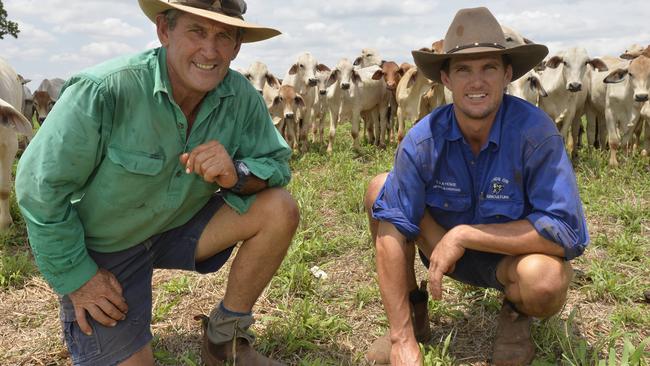ANZ Bank report debunks vision for northern food bowl
THE grand vision of northern Australia growing crops to feed Asia has been debunked by a new ANZ Bank report.

THE grand vision of northern Australia being rapidly developed with dams and irrigation projects to grow crops to feed Asia has been debunked by a new report from the ANZ Bank.
The year-long investigation by the ANZ’s respected economic research team found the government would be better off funding research to grow higher-yielding crops on existing farms in southern Australia, than pouring public money into new dams and Ord-like irrigated cropping projects across Australia’s north.
The report, Molehill to Mountain: agriculture in northern Australia, found such large-scale irrigated cropping projects would immediately deliver negative returns to investors on current sorghum, corn and soybean prices, risking “white elephant developments” and scaring off investment.
Instead, the best immediate returns to foreign and local investors eyeing Australia’s undeveloped north for opportunities lay in improving and modernising the existing northern beef and live- cattle export industries, so-called “brownfield” investment.
The report also warns against the rhetoric that investment in northern food bowls supplying Asia — the vaunted “dining boom” — could fill the gap in export earnings as the mining boom declines.
ANZ chief economist Warren Hogan said he had been surprised at just how unprofitable the report found it would be to invest in new irrigated cropping projects in northern Australia on current commodity prices, despite the Asian food-boom story.
“I think there is romanticism about developing the north; when you look at just how little land and water is actually available it is more constrained and expensive than we thought,” Mr Hogan said.
Government investment in northern agriculture and infrastructure was necessary and critical in the next 30 years, but for strategic and nation-building reasons rather than economics.
The report concluded capital investment in cattle, such as the installation of water pipes and water tanks to give them better and closer access to troughs, more fencing, irrigated fodder crops for cattle, new varieties of pastures and smaller paddocks was likely to generate the best investment returns of up to 13 per cent a year.
NT cattle and hay farmer Phil Howie said he was not surprised that the first wave of northern development should focus on improving cattle production.
Mr Howie said he had more than doubled the number of cattle he could fatten on his Maneroo station on the Daly River northwest of Katherine, by breaking his 5300 hectare property into much smaller paddocks, with more water, better feed and less distance for each animal to walk to water.
“In the future I think we have to look to more irrigation and growing (grain and oilseed) crops across the north, but that development will be much slower and require more outside and government capital; the beef industry is where investment can happen first, fastest and really change the way we do things,’’ Mr Howie said.
The report estimated beef production could be doubled if 15,000 gigalitres of irrigation water was harnessed from summer rain and floods.
Read more on The Australian.


